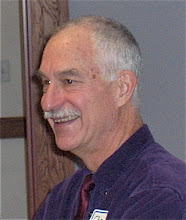NR 386 - The class called University Teaching. Twelve PhD students who will end up teaching some undergrads in their careers and unlike most doc students, these twelve get to explore the world of university teaching with me. We think about things they rarely ponder, things that are on the minds of public school teachers all the time - lesson planning, how best to introduce a lesson to get max student participation, how to close out a lesson so students hear what it was they think they may have learned (if they even have an idea!), and so on.
I was frustrated at the end of the class as I always am. This is not a new thing to me. After all my years of teaching, I know the best way to get these characters to think differently about how to teach well is to involve them in hands on action with the methods and ideas we talk about. Mass practice, distributed practice, building relationships, wait time - strategies with proven track records vis-a-vis increasing student learning. My frustration is I always run out of time in class and either I don't get to do what I'd planned to do, or I do and we have little or no time to process the activity. Granted, I'm working with the cream of the crop but still, they are young, they are inexperienced, their models may not have been so great, and they don't realize that teaching and learning are actually connected and that they have as much responsibility for ensuring the latter as they do delivering the former.
So I thought I'd use this blog as a repository of 45 minute activities I could do in class that we could process using frameworks (UDL, Bloom) and teaching theory (mastery, inquiry, projects) to get the biggest bang for their buck. So here goes... . I'm hoping to do one of these for each class if I have the honor of teaching this course again next Fall.
1. Correcting crappy objectives.
2. Communicating with cartoons. Above is one of mine, along with substantive comment from text.
3. Doing small groups with rules and norms, task and resource cards. Assessing the impact of norms and roles on group processing.
4. Using the feedback sheets to assess their chapter presentations. Perhaps even having them design their own feedback sheet, all based on substantive research of course. We could start with critiquing mine.
5. Critiquing my syllabus using the chapter on beginnings, and then redesigning the syllabus.
Gotta go. But this will grow.
Thanks for listening.
CR


No comments:
Post a Comment